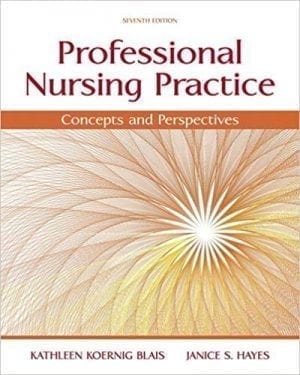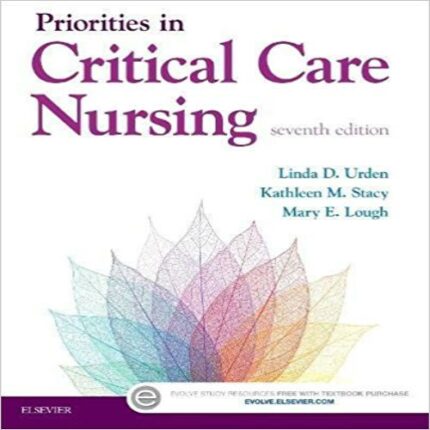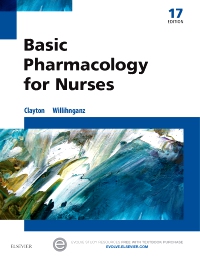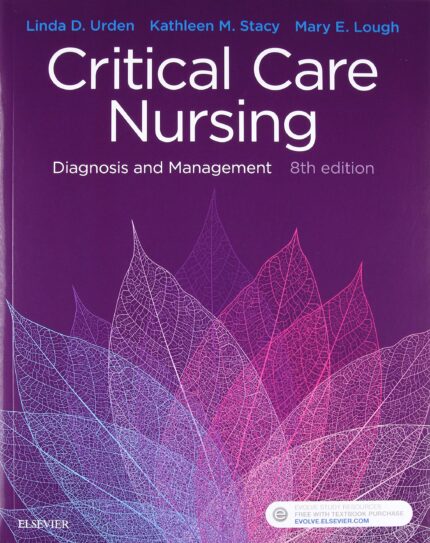Professional Nursing Practice Concepts and Perspectives 7th Edition by Blais – Test Bank
Blais/Hayes, Test Item File for Professional Nursing Practice: Concepts and Perspectives, 7e
Chapter 3: Historical Foundations of Professional Nursing
Question 1
The nursing student developing a presentation on the early history of nursing is not able to find much information about this period. Why is the nurse unable to find any information?
1. There were not many nurses, so only the sickest people received nursing care.
2. Many of those providing care to the sick were slaves.
3. Only men provided health information and care.
4. Only the wealthiest of patients were provided nursing care.
Correct Answer: 2
Rationale: In early history, nursing care was often provided by female slaves. Mothers, daughters, and wives also provided care to family members during illness. This care was provided both in wealthy families and in poor families.
Cognitive Level: Applying
Client Need: Safe and Effective Care Environment
Client Need Sub: Management of Care
QSEN Competencies: III.A.4. Describe reliable sources for locating evidence reports and clinical practice guidelines.
AACN Essential Competencies: V.6. Explore the impact of socio-cultural, economic, legal, and political factors influencing healthcare delivery and practice.
NLN Competencies: Context and Environment; Practice; Employing Techniques; Internalize a questioning pattern of thought.
Nursing/Integrated Concepts: Assessment; Nursing Process
Learning Outcome: 1. Discuss the historical development of nursing from ancient times to the present.
Page Number: p. 39
Question 2
What was the earliest documentation of law governing the practice of medicine?
1. The Code of Hammurabi
2. The writings of Hippocrates
3. The Ebers papyrus
4. The Mosaic Code
Correct Answer: 1
Rationale: The earliest documentation of law governing the practice of medicine is the Code of Hammurabi, attributed to the Babylonians and dating to 1900 bc. Hippocrates, who is considered the father of medicine, lived about 360 bc; the Ebers papyrus dates to approximately 1550 bc; the Mosaic Code is from the ancient Hebrew culture, probably around 1400 bc.
Cognitive Level: Remembering
Client Need: Safe and Effective Care Environment
Client Need Sub: Management of Care
QSEN Competencies: III.A.4. Describe reliable sources for locating evidence reports and clinical practice guidelines.
AACN Essential Competencies: V.6. Explore the impact of socio-cultural, economic, legal, and political factors influencing healthcare delivery and practice.
NLN Competencies: Context and Environment; Practice; Employing Techniques; Internalize a questioning pattern of thought.
Nursing/Integrated Concepts: Assessment; Nursing Process
Learning Outcome: 1. Discuss the historical development of nursing from ancient times to the present.
Page Number: p. 39
Question 3
Which statement describes the significance of the Mosaic Code in the history of health care?
1. The code outlined policy and procedure for early surgical interventions.
2. Early nurses ascribed to the code as a part of their registration process.
3. Public health was improved by this first sanitary legislation.
4. This code provided strict educational requirements for physicians.
Correct Answer: 3
Rationale: The Mosaic Code is considered the first sanitary legislation and contains the first record of requirements to improve public health. The code, which covered every aspect of individual, family, and community health, differentiated between clean and unclean. The code did not provide a policy for surgical interventions or outline education requirements. Nurses were not “registered” at this time in history.
Cognitive Level: Analyzing
Client Need: Safe and Effective Care Environment
Client Need Sub: Safety and Infection Control
QSEN Competencies: I.A.4. Examine how the safety, quality, and cost-effectiveness of health care can be improved through the active involvement of patients and families.
AACN Essential Competencies: II.7. Promote factors that create a culture of safety and caring.
NLN Competencies: Quality and Safety; Ethical Comportment; Commit to a generative safety culture.
Nursing/Integrated Concepts: Assessment; Nursing Process
Learning Outcome: 1. Discuss the historical development of nursing from ancient times to the present.
Page Number: p. 39
Question 4
Which option supports the way Hippocrates viewed disease?
1. A mystical connection between the body and the stars causes disease.
2. Diseases are the result of being a victim of black magic and spells.
3. Disease is caused by naturally occurring factors.
4. Evil thoughts and deeds cause disease.
Correct Answer: 3
Rationale: Hippocrates is considered to be the father of medicine. He believed that disease had a natural cause, in contrast to the magical and mystical causes that had been thought to cause disease by priests and witch doctors. He did not believe the disease was caused by evil thoughts and deeds.
Cognitive Level: Analyzing
Client Need: Safe and Effective Care Environment
Client Need Sub: Safety and Infection Control
QSEN Competencies: I.A.4. Examine how the safety, quality, and cost-effectiveness of health care can be improved through the active involvement of patients and families.
AACN Essential Competencies: II.7. Promote factors that create a culture of safety and caring.
NLN Competencies: Quality and Safety; Ethical Comportment; Commit to a generative safety culture.
Nursing/Integrated Concepts: Planning; Nursing Process
Learning Outcome: 1. Discuss the historical development of nursing from ancient times to the present.
Page Number: p. 40














Reviews
There are no reviews yet.